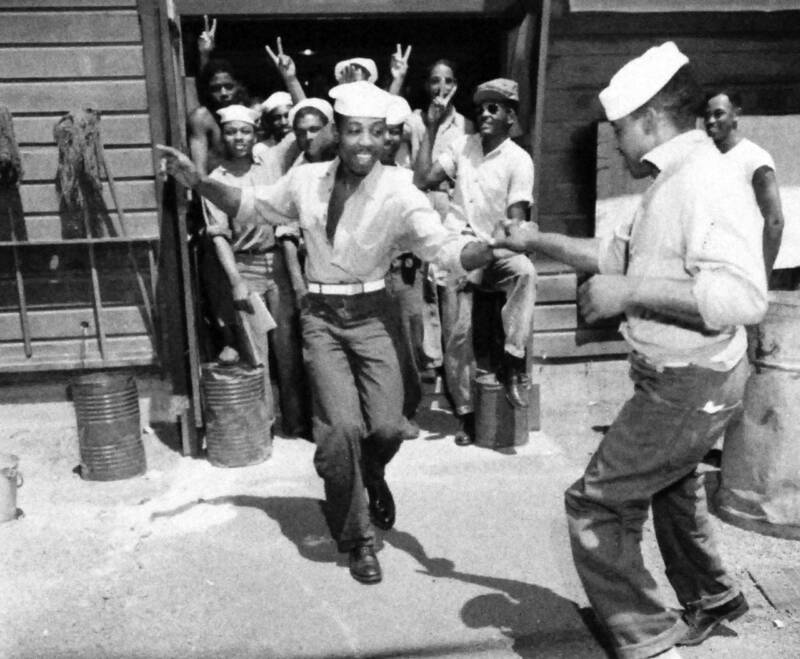
Under WPO-3, the Philippine garrison was to hold the entrance to Manila Bay and deny its use to Japanese naval forces and ground forces were to prevent enemy landings. When MacArthur returned to active duty, the latest revision plans for the defense of the Philippine Islands had been completed in April 1941 and was called WPO-3, based on the joint Army-Navy War Plan Orange of 1938, which involved hostilities between the United States and Japan.

air and naval power in the Philippines, the Japanese gained supremacy that isolated the Philippines from reinforcement and resupply, and provided itself with both airfields for support of its invasion forces and staging bases for further operations in the Dutch East Indies. These small-scale landings preceded the main assault on December 22, 1941, at Lingayen Gulf on the beaches of La Union from San Fernando City all the way down south to Santo Tomas and at Lamon Bay, Tayabas, by the 14th Japanese Imperial Army, led by Lieutenant General Masaharu Homma.īy effectively neutralizing U.S. These air attacks and naval actions, however, did not significantly delay the Japanese assault. Army Air Corps pilot Sam Marrett was killed while on his successful attack against the minesweeper. planes damaged two Japanese transports and a destroyer, and sank one minesweeper. In one last coordinated action by the Far East Air Force, U.S. Submarines of the Asiatic Fleet were also assigned to the effort. Army Air Force B-17s, often with little if any fighter escort, attacked Japanese ships offloading at Gonzaga and the Vigan landings on Luzon with no effect. Asiatic Fleet to withdraw its surface ships from its naval base in Cavite and retreat southwards, leaving only the submarine force to resist the Japanese with untested, faulty torpedoes.įrom December 8 to 10, scattered resistance by ground troops and remaining American air and naval forces failed to stop preliminary landings to seize airfields at Batan Island, Aparri, and Vigan City. In one day, the Japanese had gained air superiority over the Philippine Islands. Many American planes were caught on the ground and summarily destroyed. This "ultimatum" was rejected by Japan and the fuse was lit.Īfter Japanese carrier planes attacked the United States Pacific Fleet at Pearl Harbor on the morning of Decem(December 8, Manila time), Taiwan-based aircraft, within seven hours, pounded the main bases of the American Far East Air Force at Clark Field in Pampanga, Iba Field in Zambales, Nichols Field near Manila, and the headquarters of the United States Asiatic Fleet in the Philippines, at Cavite.
Japan victory march series#
It began supplying arms to Chiang Kai-shek in China, began a massive military build-up in the Philippines and imposed a series of embargoes, most importantly a refusal to sell Japan petroleum unless they evacuated all of China, including Manchukuo (Manchuria). In late summer 1941, the Roosevelt Administration began a series of moves toward Japan that could only conclude with war.

The capture of the Philippine Islands was crucial to Japan's effort to control the Southwest Pacific, seize the resource-rich Dutch East Indies, and protect its Southeast Asian flank. ( March 2020) ( Learn how and when to remove this template message)
Unsourced material may be challenged and removed.

Please help improve this section by adding citations to reliable sources. and Filipino prisoners of war were forced into the Bataan Death March. The American surrender at Bataan to the Japanese, with 76,000 soldiers surrendering in the Philippines altogether, was the largest in American and Filipino military histories, and was the largest United States surrender since the American Civil War's Battle of Harpers Ferry. As the combined American and Filipino forces made a last stand, the delay cost the Japanese valuable time and prevented immediate victory across the Pacific. The Bataan Peninsula and the island of Corregidor were the only remaining Allied strongholds in the region.ĭespite their lack of supplies, American and Filipino forces managed to fight the Japanese for three months, engaging them initially in a fighting retreat southward. By this time, the Japanese controlled nearly all of Southeast Asia. and Filipino forces in the islands, General Douglas MacArthur, consolidated all of his Luzon-based units on the Bataan Peninsula to fight against the Japanese army. In January 1942, forces of the Imperial Japanese Army and Navy invaded Luzon along with several islands in the Philippine Archipelago after the bombing of the American naval base at Pearl Harbor. The battle represented the most intense phase of the Japanese invasion of the Philippines during World War II. The Battle of Bataan ( Tagalog: Labanan sa Bataan January 7 – April 9, 1942) was fought by the United States and the Philippine Commonwealth against Japan during World War II.


 0 kommentar(er)
0 kommentar(er)
